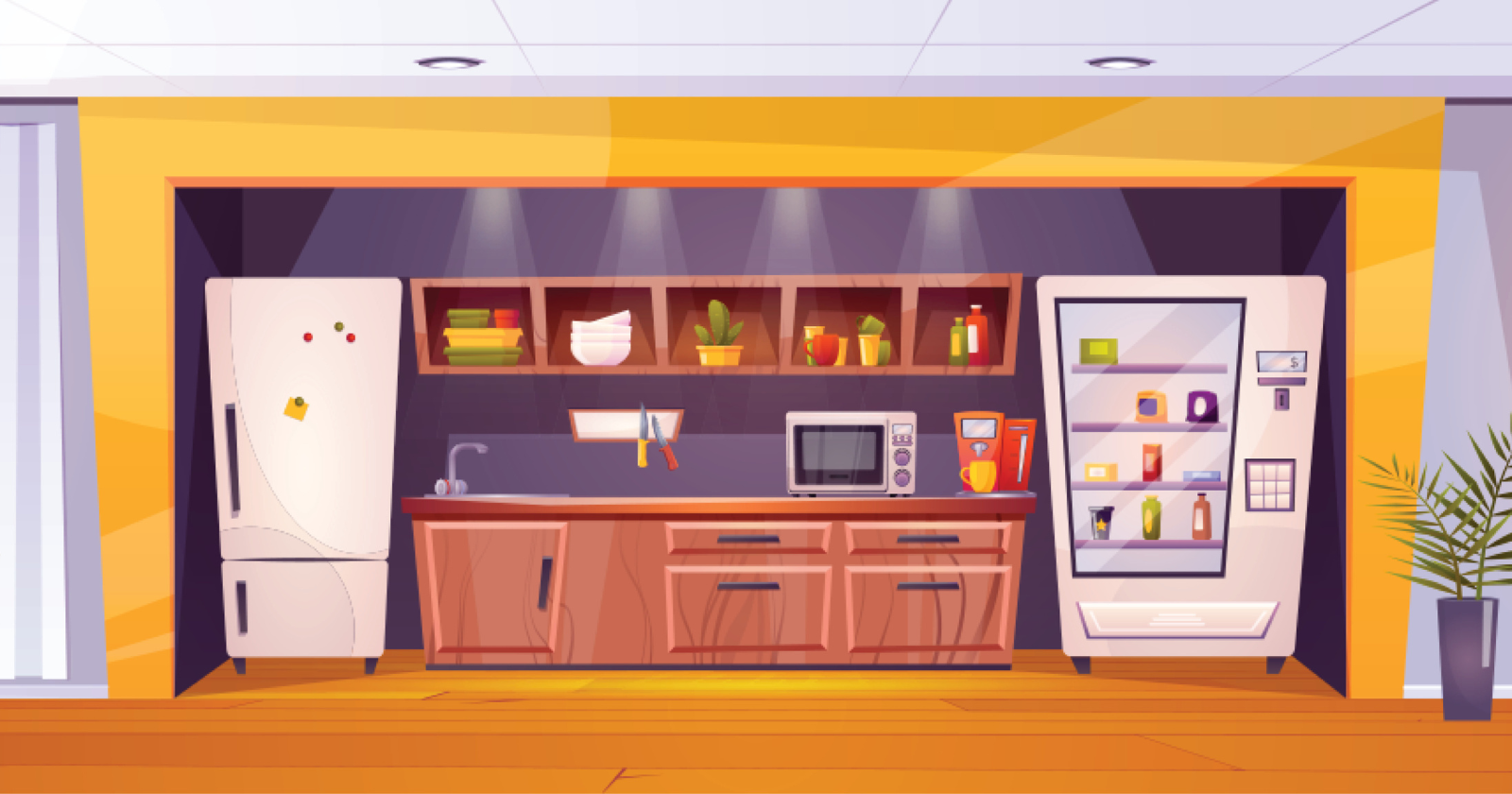In recent years, the concept of the ergonomic kitchen has taken center stage in home design, flourishing as a beneficial blend of form and function. The goal of an ergonomic kitchen is to create an environment that is tailored to the user’s needs, reducing physical strain and heightening efficiency.
As someone who appreciates the value of a comfortable living space, I recognize that such a design is not only about aesthetics but also about ensuring that every aspect of the kitchen is accessible and convenient for everyone, including people with disabilities, senior citizens, and those with mobility issues.
The principles of ergonomic kitchen design revolve around personalizing the space to fit the user’s individual physical requirements, promoting safety, and enhancing overall kitchen operation.
The height and placement of countertops, the choice of appliances, and the materials used for work surfaces are all meticulously considered to cater to various users.
Lighting and ventilation are also integral, as they directly impact the comfort and usability of the space, ensuring a well-lit and breathable environment.

Key Takeaways
- Ergonomic kitchens prioritize user comfort and efficiency through personalized design.
- Design choices in materials and appliances enhance accessibility for individuals with mobility challenges.
- Safety and ease of use are at the forefront of ergonomic kitchen planning.
Ergonomic Kitchen Design Principles
In my experience, properly adhering to ergonomic design principles in the kitchen can notably enhance its functionality, especially for individuals with disabilities, seniors, and those with hand mobility issues.

Work Triangle Optimization
I understand that one foundational aspect of an ergonomic kitchen is the Work Triangle. This involves the strategic placement of the three most used workstations: the cooktop, the refrigerator, and the sink.
Optimizing the work triangle aims to reduce unnecessary movement, which is particularly beneficial for seniors or those with limited mobility. Ideally, no leg of the triangle should be less than 4 feet or more than 9 feet, ensuring that all kitchen tasks are within easy reach.
Counter Height and Depth
When considering Counter Height and Depth, I’ve found it’s best to customize to the individual’s needs. The standard counter height is approximately 36 inches, but it may need to be adjusted to accommodate those in a wheelchair or with varying levels of reach.
Counter depth should also allow for easy access to all areas without overextending or straining, typically around 24 inches deep for standard cabinets.
Accessible Storage Solutions
Accessible Storage Solutions are key for those with mobility challenges. I recommend including features such as pull-out drawers, Lazy Susans, and lower cabinets with pull-down shelves.
These modifications enable easy access to kitchen items without the need for excessive reaching or bending, which can be particularly strenuous for my target audience.
Accessibility design enhancements should ensure that storage is within comfortable reach, allowing users to maintain independence and safety while using their kitchen.

Essential Ergonomic Kitchen Appliances
When I select appliances for an ergonomic kitchen, my focus is on ensuring they provide comfort and ease of use, especially for people with disabilities, seniors, and those with hand mobility issues. Here are some appliances I find crucial:
Adjustable Cooking Surfaces
Adjustable cooking surfaces offer the best in comfort and safety for users who require varying heights to accommodate their physical needs.
I recommend induction cooktops that can be installed at different heights and have controls at the front, so there’s no need to reach over hot surfaces. Moreover, some models include features like:
- Touch controls: These are for easy handling without the need for excessive force or intricate movements.
- Locking features: To prevent accidental changes in settings, providing an extra layer of safety.
Easy Access Refrigeration
For refrigeration, I find that bottom freezer models are particularly ergonomic as they prevent bending and stooping to access frequently used fridge compartments.
Features such as sliding shelves and pull-out bins enhance accessibility by bringing food items closer to the user without the need for stretching or straining. Key features to look for include:
- Sliding shelves: Helps easily reach items tucked away at the back.
- Pull-out bins: Make it simpler to access and organize stored items.
Dishwasher Placement Tips
Dishwasher placement is often overlooked. I suggest installing the dishwasher at a raised height to minimize bending during loading and unloading.
When shopping for a dishwasher, I take note of models that offer features such as:
- Adjustable racks: To customize space based on the size of the dishes.
- Touchpad controls: For an effortless operation that doesn’t require forceful pushing.

Materials and Surfaces
Selecting appropriate materials and surfaces is critical in designing an ergonomic kitchen. These choices impact not only aesthetics but also comfort, functionality, and accessibility, especially for people with disabilities, seniors, and those with hand mobility issues.
Anti-Fatigue Flooring Choices
Anti-fatigue flooring is essential in an ergonomic kitchen. I prefer materials like rubber, cork, and gel mats because they provide cushioning, reducing strain on the legs and back.
- Rubber: Durable and easy to clean, it’s ideal for high-traffic areas.
- Cork: A natural insulator, cork is warm underfoot and helps minimize noise.
- Gel Mats: These can be strategically placed in areas where one might stand for long periods, such as in front of the sink or stove.
Countertop Materials and Finish
When considering countertops, I look for materials that are easy to maintain and kind to the joints. A matte finish on countertops can help reduce glare, which is particularly beneficial for people with visual impairments.
- Quartz: It’s non-porous, making it resistant to stains and easy to clean.
- Granite: While requiring periodic sealing, it is durable and heat-resistant.
- Laminate: This is a cost-effective choice with a variety of designs, but it can be sensitive to heat and scratches.
Cabinetry Material Considerations
Cabinetry should not only be sturdy but also have a tactile quality that makes it easy to grip and open. Here’s what I recommend for cabinetry materials:
- Hardwood: It offers solid construction with the potential for ergonomic hardware installation.
- Plywood: It’s strong and more water-resistant compared to particle board.
- Stainless Steel: A good option for easy maintenance and modern aesthetics, but can be cost-prohibitive.

Lighting and Ventilation
Efficient lighting and ventilation are crucial in an ergonomic kitchen design. These elements ensure a safe, comfortable, and energy-efficient cooking environment, particularly for people with disabilities, seniors, and those with hand mobility issues.
Task Lighting Placement
In my experience, the strategic placement of task lighting is key to reducing eye strain and increasing visibility in areas where precision is essential.
For example, under-cabinet lighting ensures clear visibility on countertops, helping users with varying levels of vision acuity or hand mobility to cook and prepare food safely.
Natural Light Integration
I prioritize integrating natural light through design features like larger windows or skylights. Not only does this help cut down energy costs, but it also provides an even, diffused light that’s easier on the eyes, which can be particularly beneficial for seniors who might be sensitive to harsh artificial lighting.
Efficient Ventilation Systems
Properly designed ventilation systems play a pivotal role in maintaining air quality by removing odors and reducing humidity.
In my kitchen designs, I always recommend range hoods with adjustable speed settings to cater to the specific needs of my clients. This makes it easier for users with limited hand mobility to manage the controls.

Safety and Accessibility
When designing an ergonomic kitchen, I prioritize safety and accessibility, especially for people with disabilities, seniors, and those with hand mobility issues. Specific features and designs can significantly reduce risks and enhance the autonomy of all users.
Non-Slip Surfaces
I cannot overemphasize the importance of non-slip flooring in the kitchen. Falls are a major hazard, and non-slip surfaces help prevent accidents.
Whether it’s textured tiles, rubber mats, or slip-resistant vinyl, having a floor that provides grip can make a kitchen safer for everyone, especially for those with a higher risk of falls.
Clearance for Mobility
Adequate clearance is critical for mobility around the kitchen. I ensure there’s enough space for wheelchair users to maneuver comfortably.
A minimum clearance of 42 inches allows for a smoother flow and accessibility between key areas like the sink, stove, and refrigerator, accommodating wheelchair-turning radii and promoting independence in the kitchen.
Childproofing and Universal Design
Universal design principles for childproofing are essential in a kitchen that serves people of all ages and abilities.
Locks on cabinets and drawers, safety latches, and keeping dangerous tools and appliances out of children’s reach ensure a safer environment.
Additionally, installing appliances and storage at reachable heights follows universal design principles, making the kitchen more inclusive for people with varying abilities.

Conclusion
In designing an ergonomic kitchen, my goal has always been to prioritize efficiency, comfort, and safety, especially for individuals with disabilities, seniors, and those with hand mobility issues.
The ideal ergonomic layout reduces strain, prevents injuries, and promotes productivity. Through accessible design, kitchens can be made more user-friendly for every individual’s needs. Here are some key points I’ve incorporated to achieve this:
- Adjustable Countertops: Variable height counters accommodate different tasks and user heights.
- Lever Handles: Faucets with lever handles rather than knobs simplify operation.
- Pull-Out Shelves: Shelves that extend fully allow for easy access to items without straining.
- Multi-Level Workspaces: Offer areas for prep, cooking, and cleaning at appropriate heights.
- Clearance Space: Ample room beneath work surfaces ensures accessibility for those using mobility aids.
Tailoring these features to the specific needs of the users is essential, creating a space that is both welcoming and functional.
By integrating ergonomic principles with a deep understanding of my targeted users’ requirements, I can design a kitchen environment that truly enhances the quality of life for those with differing physical abilities.
My approach to the design process is characterized by empathy and innovation. I aim to empower everyone to navigate and utilize their kitchen space with ease and independence.
What is the meaning of ergonomics?
Ergonomics, also known as human factors, is the scientific field focused on analyzing the relationship between humans and the various elements within a system. It is a profession dedicated to utilizing theories, principles, data, and methodologies in design to enhance human welfare and improve the efficiency of the overall system.
